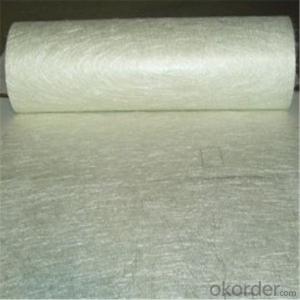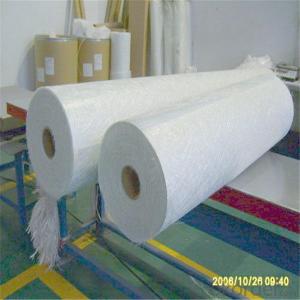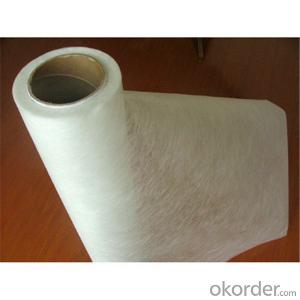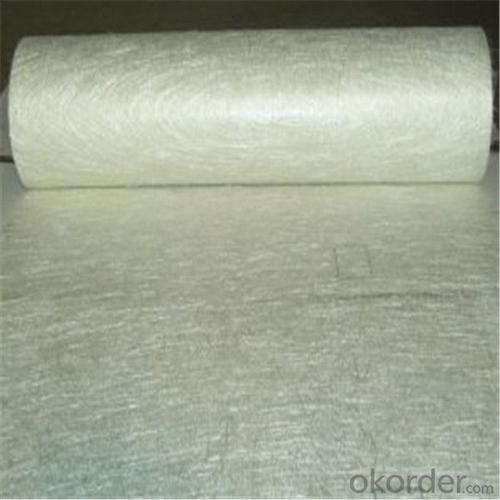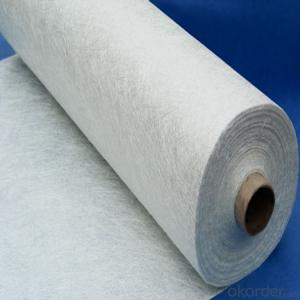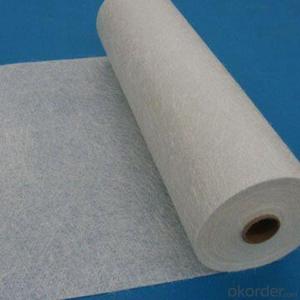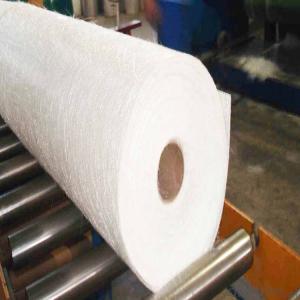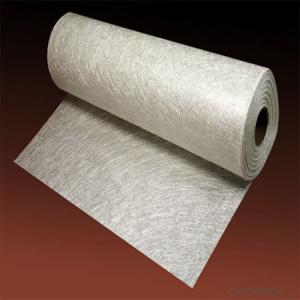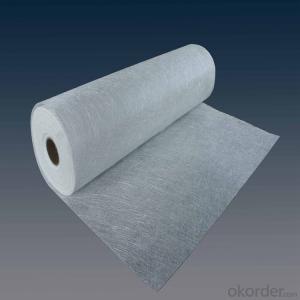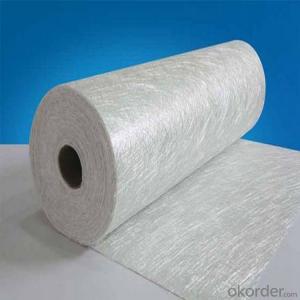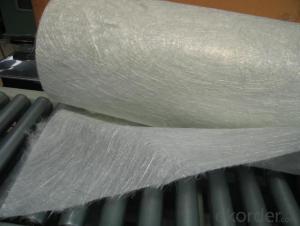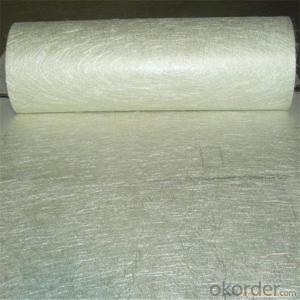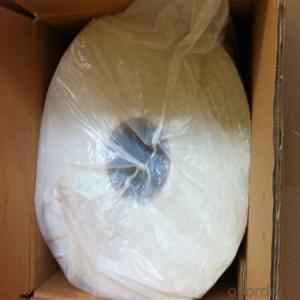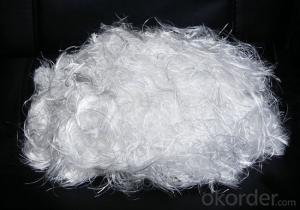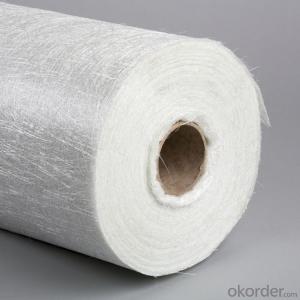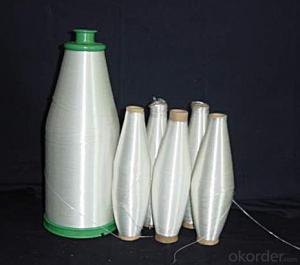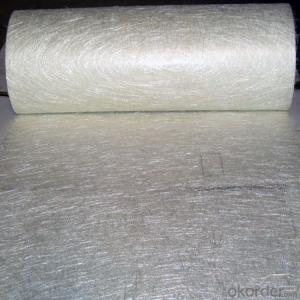Fiberglass Chopped Strands for Pa - General Purpose Fiberglass Powder Chopped Stand Mat
- Loading Port:
- Tianjin
- Payment Terms:
- TT OR LC
- Min Order Qty:
- 100 m.t.
- Supply Capability:
- 20000 m.t./month
OKorder Service Pledge
Quality Product, Order Online Tracking, Timely Delivery
OKorder Financial Service
Credit Rating, Credit Services, Credit Purchasing
You Might Also Like
Quick Details
| Technique: | Chopped Strand Fiberglass Mat (CSM) | Dimensions: | 450gsm | Mat Type: | Continuous Filament Mat |
| Fiberglass Type: | E-Glass | Softness: | softness | Place of Origin: | Jiangxi, China (Mainland) |
| Brand Name: | cnbm | Model Number: | 450gsm | color: | white |
| fiberglass type: | E glass | product: | e-glass powder chopped stand mats | binder: | powder or emulsion |
| width: | 1040 or 1270mm, as your requirement | weight: | 30 or 45kg/roll | paper tube diameter: | 90mm |
| outer diameter of roll: | 256mm | packing: | plastic film+carton box + pallet |
Packaging & Delivery
| Packaging Details: | plastic film+carton box + pallet |
| Delivery Detail: | 15-20days |
Specifications
1.e-glass powder chopped stand mats
2.binder:power or emulsion
3.width:1040mm or 1270mm
4.weight:450gsm
Picture
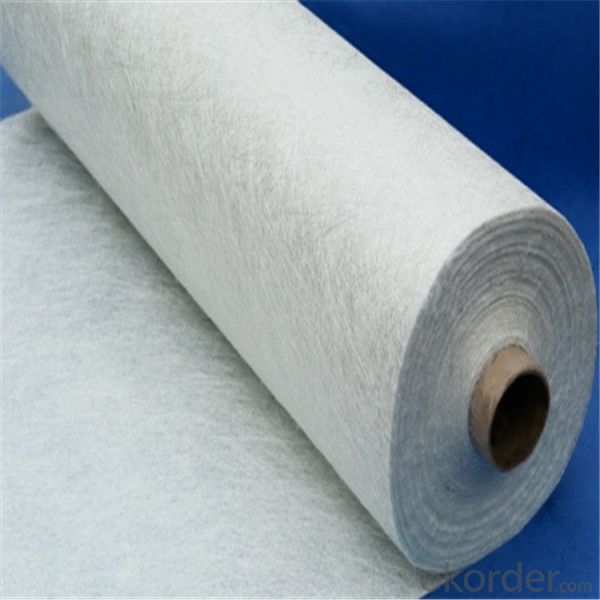
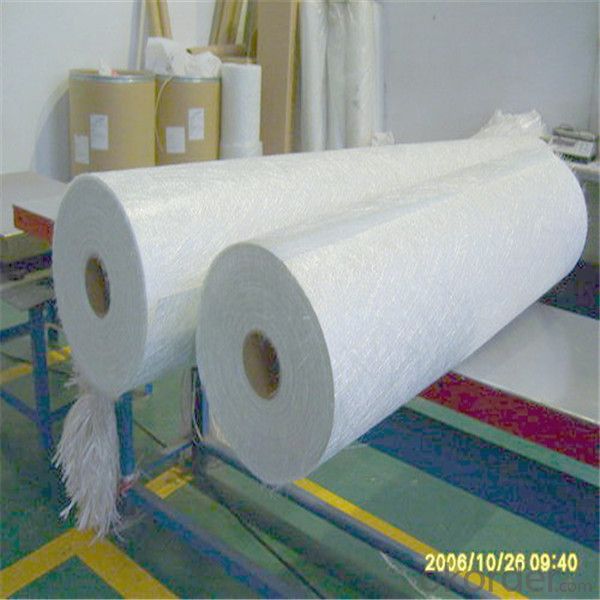
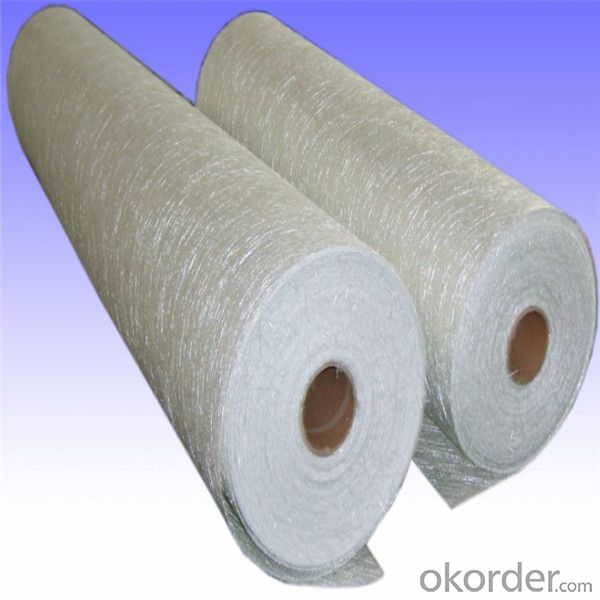
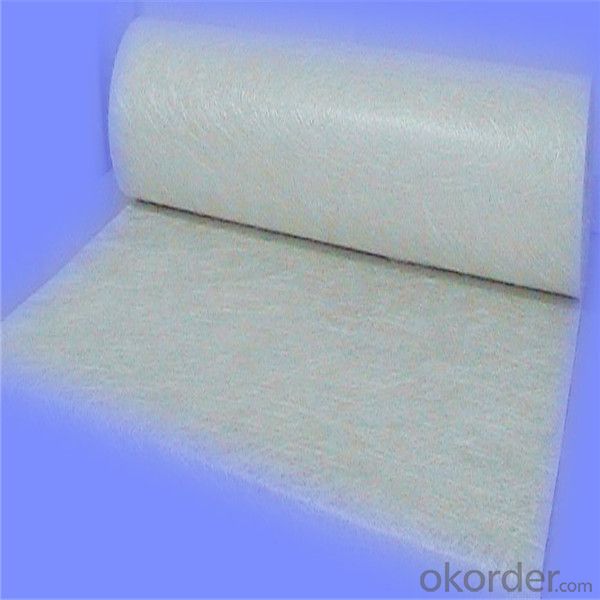
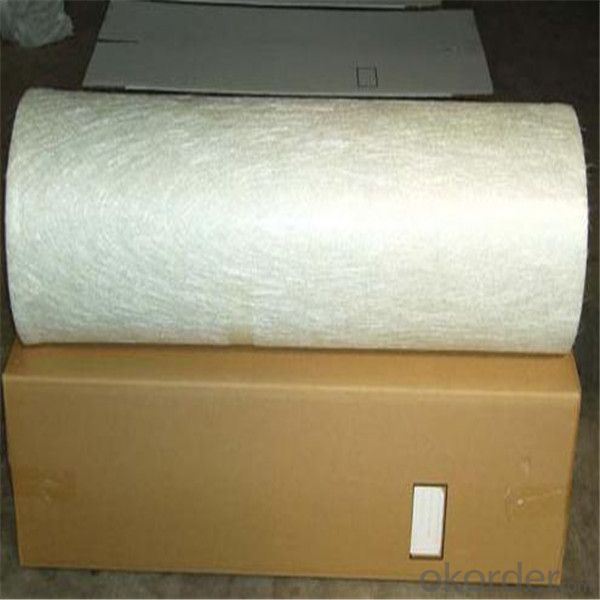
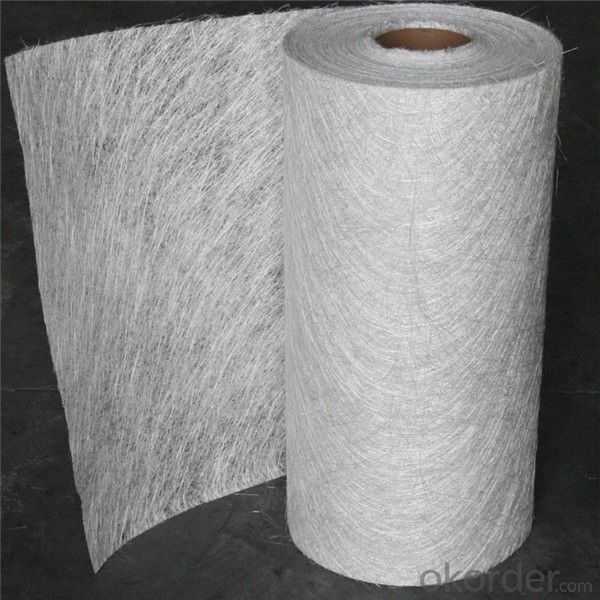
- Q: Can fiberglass chopped strand be used in automotive body repair?
- Yes, fiberglass chopped strand can be used in automotive body repair. It is commonly used as a reinforcement material in repairing damaged vehicle panels. Fiberglass chopped strand can be mixed with resin to create a strong and durable composite material that can be applied to repair cracks, holes, or other damages on automotive body parts. It provides excellent strength and rigidity, making it suitable for repairing structural components of a vehicle. Additionally, fiberglass chopped strand is lightweight and corrosion-resistant, which are desirable properties for automotive applications.
- Q: What are the typical design considerations when using fiberglass chopped strand composites?
- When using fiberglass chopped strand composites, there are several typical design considerations that need to be taken into account. Firstly, it is important to consider the mechanical properties of the chopped strand composites. Fiberglass composites are known for their high strength-to-weight ratio, which makes them desirable for many applications. However, the specific mechanical properties, such as tensile strength, flexural strength, and impact resistance, will vary depending on the type of glass fibers used, the resin matrix, and the manufacturing process. Therefore, it is crucial to understand the specific requirements of the application and select the appropriate combination of materials and manufacturing techniques to achieve the desired mechanical properties. Secondly, the dimensional stability of fiberglass chopped strand composites should be considered. Fiberglass composites can be prone to thermal expansion and contraction, which can lead to dimensional changes in the final product. This can be especially critical in applications where tight tolerances need to be maintained. To mitigate these issues, designers may need to incorporate design features such as ribs, flanges, and gussets to provide additional stiffness and reduce the risk of distortion. Another important consideration is the environmental durability of fiberglass chopped strand composites. While fiberglass composites are inherently resistant to many chemicals and environmental conditions, such as moisture and UV radiation, they can still be susceptible to degradation over time. Exposure to harsh chemicals, extreme temperatures, and prolonged UV exposure can weaken the composite material. Therefore, it is essential to assess the anticipated environmental conditions and select the appropriate resin formulation and protective coatings, if necessary, to ensure long-term durability. Furthermore, the manufacturing process and cost considerations should be taken into account. Fiberglass chopped strand composites can be manufactured using various techniques, such as hand lay-up, spray-up, filament winding, and pultrusion. Each method has its own advantages and limitations, such as production rate, complexity of shapes, and cost. Designers need to evaluate the manufacturing requirements and select the most suitable process that meets the desired design specifications and cost constraints. Lastly, it is crucial to consider the safety and health aspects associated with fiberglass chopped strand composites. The handling and processing of fiberglass materials can release fine glass fibers, which can pose a health risk if inhaled. Designers should incorporate appropriate safety measures, such as dust control systems and personal protective equipment, to minimize the risk of exposure to fiberglass particles during manufacturing and product use. In summary, the typical design considerations when using fiberglass chopped strand composites include mechanical properties, dimensional stability, environmental durability, manufacturing process, cost, and safety. By carefully considering these factors, designers can ensure that the final product meets the required performance, durability, and safety standards.
- Q: What is the dimensional stability of fiberglass chopped strand?
- The dimensional stability of fiberglass chopped strand refers to its ability to maintain its shape and size under various conditions. Fiberglass chopped strand is known for its excellent dimensional stability, meaning it retains its shape and size even when exposed to extreme temperatures, moisture, or mechanical stress. This stability is attributed to the inherent properties of fiberglass, such as its high strength-to-weight ratio and low coefficient of thermal expansion. Additionally, the random orientation of the chopped strands enhances the stability by distributing any potential stress or strain throughout the material. Overall, the dimensional stability of fiberglass chopped strand makes it a reliable and durable material for various applications, including reinforcement in composites, insulation, and construction.
- Q: How does the creep resistance of fiberglass chopped strand compare to other reinforcing materials?
- The creep resistance of fiberglass chopped strand is generally considered to be superior to many other reinforcing materials. Fiberglass chopped strand is known for its high tensile strength, which allows it to withstand significant loads without deforming over time. This resistance to creep is particularly advantageous in applications where the material is subjected to constant or repetitive stress, such as in structural components or automotive parts. Compared to other reinforcing materials like carbon fiber or steel, fiberglass chopped strand offers several benefits in terms of creep resistance. Carbon fiber is known for its high strength-to-weight ratio, but it is more susceptible to creep under sustained loads. Steel, on the other hand, has excellent load-bearing capabilities but is prone to creep over time. Fiberglass chopped strand, with its unique combination of high tensile strength and low creep properties, provides a reliable and durable solution for various applications. Its resistance to creep ensures that the material will maintain its structural integrity and dimensional stability over an extended period. This makes it an ideal choice in industries where long-term performance is crucial, such as aerospace, construction, and marine sectors. Furthermore, fiberglass chopped strand is highly resistant to corrosion, which is another advantage compared to materials like steel. This corrosion resistance allows it to be used in harsh environments or exposed to moisture without compromising its mechanical properties. In summary, the creep resistance of fiberglass chopped strand is generally superior to other reinforcing materials like carbon fiber or steel. Its high tensile strength, low creep properties, and corrosion resistance make it a reliable and durable choice for various applications.
- Q: What are the applications of fiberglass chopped strand?
- The unique physical and mechanical properties of fiberglass chopped strand allow for a wide range of applications. Here are some common uses: 1. Composite materials reinforcement: Fiberglass chopped strand is widely utilized as reinforcement in composite materials like fiberglass-reinforced plastics (FRP). By mixing the strands with resin, a strong and lightweight material is created, which finds extensive use in industries such as automotive, aerospace, construction, and marine. 2. Insulation: Fiberglass chopped strand is commonly employed as insulation material across various applications. Its excellent thermal insulation properties make it suitable for insulating walls, roofs, pipes, and appliances. Additionally, fiberglass insulation provides soundproofing capabilities, making it ideal for noise reduction applications. 3. Filtration and separation: The fine fibers of fiberglass chopped strand find use in filtration and separation processes. They can be manufactured into filter media to remove impurities from air, water, oil, and other fluids. HVAC systems, industrial applications, and even face masks commonly utilize fiberglass filters. 4. Electrical insulation: The high dielectric strength and resistance to electrical conductivity of fiberglass chopped strand make it a popular choice for electrical insulation. It is commonly found in electrical cables, transformers, circuit boards, and other electrical components to prevent electrical current leakage and ensure safety. 5. Concrete reinforcement: Fiberglass chopped strand is also employed as a reinforcement material in concrete structures. It enhances the strength and durability of concrete, making it suitable for applications such as bridges, roads, tunnels, and buildings. Fiberglass-reinforced concrete (FRC) provides improved resistance against cracking, impact, and corrosion. 6. Automotive applications: The automotive industry extensively utilizes fiberglass chopped strand for various purposes. It is commonly used in the production of car bodies, interior panels, bumpers, and other components. The lightweight nature and high strength properties of fiberglass make it an ideal material for improving fuel efficiency and overall performance. These examples highlight the versatility, durability, and cost-effectiveness of fiberglass chopped strand, making it a favored choice across diverse industries and applications.
- Q: What are the tensile strength properties of fiberglass chopped strand?
- Fiberglass chopped strand is renowned for its outstanding tensile strength characteristics, making it a favored option across numerous industries. The ability of fiberglass chopped strand to withstand pulling or stretching forces without breaking or deforming is what defines its tensile strength. The tensile strength of fiberglass chopped strand generally varies between 700 MPa and 1500 MPa, depending on the specific type and composition of the fiberglass. This expansive tensile strength range enables it to resist breakage and deformation even under substantial loads, qualifying it for demanding applications. One of the primary factors that contribute to the tensile strength of fiberglass chopped strand is its composition. Fiberglass typically comprises fine strands of glass fibers embedded in a polymer matrix. These glass fibers possess remarkable strength and rigidity, which significantly enhances the overall tensile strength of the material. Moreover, the manufacturing process and fiber alignment also exert a critical influence on the tensile strength properties of fiberglass chopped strand. Techniques like pultrusion or filament winding can align the fibers in a specific direction, augmenting the material's tensile strength along that particular axis. Besides its impressive tensile strength, fiberglass chopped strand boasts other advantageous properties as well. It exhibits exceptional corrosion resistance, a low thermal expansion coefficient, and high electrical insulation properties. These attributes render fiberglass chopped strand suitable for a wide array of applications, such as those found in the automotive, aerospace, construction, and marine industries. In conclusion, fiberglass chopped strand possesses exceptional tensile strength properties that range from 700 MPa to 1500 MPa. Its high tensile strength, combined with other favorable characteristics, makes it an adaptable and dependable material for various applications where strength and durability are paramount.
- Q: Can fiberglass chopped strand be used in roofing materials?
- Yes, fiberglass chopped strand can be used in roofing materials. Fiberglass chopped strand is a common reinforcement material used in the manufacturing of various roofing materials such as shingles, tiles, and membranes. It offers excellent strength and durability, making it an ideal choice for withstanding harsh weather conditions and prolonging the lifespan of the roofing system. The chopped strands are typically mixed with other materials such as asphalt or resins to create a composite that enhances the structural integrity and resistance of the roofing materials. Additionally, fiberglass chopped strand is lightweight, fire-resistant, and provides good thermal insulation, which further contributes to its suitability for roofing applications.
- Q: How is fiberglass chopped strand used in the furniture industry?
- Fiberglass chopped strand is commonly used in the furniture industry as a reinforcement material. It is mixed with resins and adhesives to create strong and durable components for furniture, such as chair frames, table tops, and panels. The fiberglass adds strength and stability to the furniture, making it resistant to impact, warping, and structural failures. Additionally, fiberglass chopped strand can also be used to create decorative elements in furniture design, adding texture and visual appeal to the final product.
- Q: How does the flame retardancy of the chopped strand affect its performance?
- The flame retardancy of the chopped strand plays a crucial role in determining its performance. When a chopped strand is flame retardant, it means that it has been treated with chemicals or coatings to inhibit or delay the spread of fire. This characteristic is highly desirable in various applications where fire safety is a concern. The flame retardant properties of the chopped strand significantly enhance its overall performance. Firstly, it provides an added layer of protection against fire hazards, reducing the risk of ignition and flame propagation. This is especially important in industries where flammable materials are present, such as automotive, aerospace, and construction. By delaying or preventing the spread of fire, the flame retardant chopped strand helps to minimize the potential damage and loss caused by fire incidents. Additionally, the flame retardancy of the chopped strand improves its resistance to heat and thermal degradation. When exposed to high temperatures, materials without flame retardant properties can quickly deteriorate, lose strength, and release toxic gases. In contrast, flame retardant chopped strands can withstand elevated temperatures for a longer duration before succumbing to heat-related damage. This not only ensures the structural integrity of the material but also reduces the release of harmful fumes, aiding in the safety of individuals in proximity to the fire. Moreover, the flame retardant properties of the chopped strand can contribute to improved product longevity. By reducing the risk of fire-related accidents and damage, it helps extend the lifespan of the material, enhancing its durability and performance over time. This is especially critical in applications where the material is exposed to potential fire hazards or where its failure due to fire could have severe consequences. In conclusion, the flame retardancy of the chopped strand is a crucial factor in determining its performance. It provides enhanced fire safety, resistance to heat and thermal degradation, and contributes to the overall durability and longevity of the material. Therefore, choosing flame retardant chopped strands can significantly improve the performance and reliability of various products and applications.
- Q: Is fiberglass chopped strand resistant to mechanical stress?
- Yes, fiberglass chopped strand is resistant to mechanical stress. Fiberglass is known for its high strength-to-weight ratio and excellent tensile strength. Chopped strand, which consists of short lengths of fiberglass fibers, is commonly used as a reinforcement material in various applications such as composites, construction materials, and automotive parts. It provides reinforcement and enhances the mechanical properties of the final product, making it more resistant to mechanical stress and improving its overall durability. The random orientation of the chopped strands also helps in distributing the stress across the material, further enhancing its resistance to mechanical stress. Overall, fiberglass chopped strand is a reliable and effective material for withstanding mechanical stress.
Send your message to us
Fiberglass Chopped Strands for Pa - General Purpose Fiberglass Powder Chopped Stand Mat
- Loading Port:
- Tianjin
- Payment Terms:
- TT OR LC
- Min Order Qty:
- 100 m.t.
- Supply Capability:
- 20000 m.t./month
OKorder Service Pledge
Quality Product, Order Online Tracking, Timely Delivery
OKorder Financial Service
Credit Rating, Credit Services, Credit Purchasing
Similar products
Hot products
Hot Searches
Related keywords
